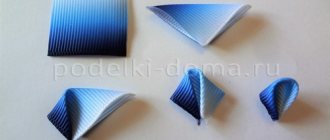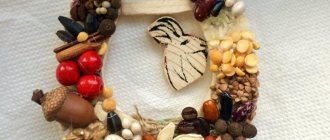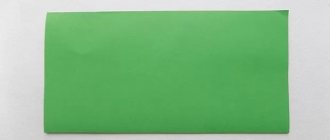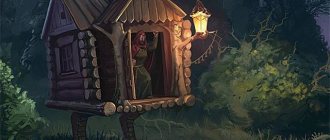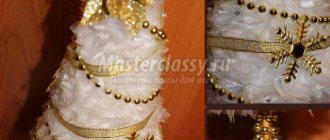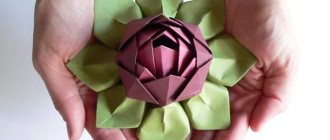Recently, clothing with various prints has become very popular. It perfectly reflects the character and personality of its owner. The most widespread application of designs on T-shirts, but it is not necessary to stop only at this part of the wardrobe.
You can decorate any textile product:
- hats;
- sweatshirts;
- raglans;
- bags;
- windbreakers, etc.
Such products will not only complement your favorite look, but will also become a creative gift.
Options for creating a drawing with your own hands
Today you can find many specialized companies and printing houses that are engaged in applying prints to various clothes. But it is much more pleasant, and even more profitable, to carry out this process yourself.
If you are seriously wondering how to make a print on fabric with your own hands, then we hasten to please you.
There are several proven methods for similar handmade:
- using a color printer;
- using acrylic paints;
- silkscreen printing.
Each type is quite simple and concise. You will need a minimum of effort to create your own design masterpiece.
Drawing on fabric using a printer
Time passes and technologies change. Just a couple of decades ago, such handicraft was possible only with the help of Chinese stickers, which were not of high quality, quickly lost their original appearance, and were worn out. Today, a home printer, a textile product, thermal transfer paper and a household iron will help you solve the question of how to make a design on fabric with your own hands.
To get a high-quality pattern and not ruin your clothes, avoid synthetic models. The iron will simply melt the fabric under high temperature. Items that are at least 80% natural cotton are preferred.
The drawing process is quite simple:
- You need to find a suitable image layout or create it yourself in a graphics editor, but do not forget that there will be a mirror image.
- Transfer the design to a carefully smoothed item, placing a sheet of paper face down. To do this, you need to iron the sketch with a hot iron for 1–2 minutes.
- To avoid damaging the print, carefully remove the sheet of paper from the surface of the textile product.
In this simple way you will get a stylish update to your wardrobe. There is only one nuance to consider when choosing thermal transfer paper. It comes in several types depending on its purpose. There are products for light and dark fabrics, as well as for different printer models.
Acrylic wonders
How to make a print on a T-shirt yourself if you don’t have a printer to print the design? In this case, the second method of creating exclusive images on clothes is suitable. Artistic skills or a special stencil will help you. If you are not particularly skilled at drawing, it is unlikely that you will be able to create a complex sketch, but everyone can add a dose of creativity to their wardrobe.
Do-it-yourself fabric printing can only be done with special acrylic paints. Working with them is not entirely easy, since you need to maintain a certain speed and technology:
- the paint dries within 15 minutes, later it will be impossible to fix anything;
- You need to apply a thin layer, otherwise the design will not dry and may smear.
If you strictly follow the instructions, then there should be no difficulties in this process.
How to make a print:
- it is necessary to prepare a stencil with an image or text;
- carefully iron the T-shirt or other item you plan to decorate;
- lay a solid foundation;
- fill the stencil with acrylic paint using a sponge;
- if necessary, correct the drawing with a brush;
- After 24 hours, iron the item through a thin cloth.
If you have talent and are passionate about creativity, then you can make an original drawing using a regular painting brush.
Master class: transferring the image to fabric! Very simple and economical
I think I'm not the only person who has thought about transferring an image directly onto fabric!
You can say that there are a million possibilities:
- Thermal transfer paper... Yes, only here in Transnistria it costs about $30 for 10 sheets. I don’t know, I’m being crushed by a toad!
- Option with transfer using acetone, grease remover (or whatever it is called :)) It’s tedious, dirty, and in the end it doesn’t work with my inkjet printer!
Here I will make some remarks - about inkjet printers. This is the last century, but the toad that choked me when buying thermal transfer paper was right there when I bought the printer! In the end, I bought a “miracle” for 50 euros, and then found out that buying cartridges was more expensive than the cost of the printer itself...
***
Well, there’s nowhere to go: the desire to make fabric tags with a design wouldn’t let me go, and as a result of a lot of experimentation, I finally found an excellent, and most importantly, a very simple way to transfer an image onto fabric!
***
I'm ready to share it with you:
Getting ready for work!
First we need a plain cotton fabric! We draw rectangles on it, the size of an A4 sheet. The dog Boss helped me in this matter:
I, like a true former blonde, mercilessly shredded the Ikea pink (!) curtain. This is what you get, practically printable sheets:
Let's go starchy!
Now let's go to the kitchen. We need to prepare a composition for starching fabric. This is necessary so that the fabric becomes dense and easily perceived by the printer.
In general, as you know, there are several options for starching:
- Soft - used for clothes (dresses, blouses), as well as for linen.
- Semi-rigid is already an option for tablecloths and napkins
- Finally, the option we need is hard starching. This is how I starch my husband’s collars and cuffs on his shirts.
We stock up on potato starch and a tablespoon :):
We take an enamel bowl and add starch there, based on the calculation - 2 tablespoons per liter of water. I got generous and poured in a whole two-liter teapot, that is, I put in 4 tablespoons. Practice later showed that a liter would be quite sufficient, unless, of course, you are going to starch fabric scraps weighing a ton.
So, put the starch in our bowl, add just a little cool water and knead it. The consistency should be like thick sour cream. After this, you can safely pour the mixture with boiling water in the required volume, stirring constantly:
As a result, we get such a witch’s brew 
All this happens very quickly. That's it: you can go watch the series, since you need to let the cast cool down. Inspired, I also shredded a white baby diaper. By the way, it looks really cool on white!!! The dog was nearby, so get ready for the bright attack of your pets on the spread fabrics. This is a sore subject for me, but it’s still funny and enjoyable! My husband suggested cutting out a stencil according to the silhouette of a dog and printing it later)))
Did you wait until the composition cooled down? That's it - we take a pan, tissues and go to the bathroom or to the balcony, in a word, to where we will dry the sawn-off sawn-offs.
There we very busily soak each piece in the solution
Gently squeeze out all the excess, hang it up (without clothespins!!!)
Let's go watch the series again, because the fabric should dry out slightly (!!!).
Let's iron!
As soon as the excess water has drained off, this time we go to the ironing board. We put a terry towel on it. We will iron the rags through a thin fabric. Like a good mother))), I keep my daughter’s diapers, so they periodically come in handy for such purposes!
Be sure to set your iron to the setting for ironing wool. The towel and fabric will perfectly absorb excess starch, after which all this excess will be removed after soaking in a soapy solution. We ironed our blanks and carefully laid them out on a towel to dry:
At that moment I looked at the clock and saw that it was already 4 o’clock in the morning and went to bed - I still have to wait until everything dries!
Direct process!
The next morning I ran to touch the fabric! She had the right amount of toughness! Hooray! That's it - now we have almost reached our goal.
Let's create the image we need! We save it on the computer.
In a Word document, create a table and insert into each cell a picture of the size you need:
We insert our fabric directly into the printer. We make sure that it stands up straight:
We pray and click on “Print”! We watch with true reverence as the fabric with the image printed on it protrudes from the “mouth” of the printer!
and click on “Print”! We watch with true reverence as the fabric with the image printed on it protrudes from the “mouth” of the printer!
I used the same method to make narrow tags for toys, inspired by the results:
Note: the photo is not of very high quality, because I forgot the camera at my mother’s, I had to take a photo with my phone) This way the colors turn out more than bright!
We wait a couple of minutes, iron it through gauze. And we cut out our tags. It’s best to entrust this to your husband - don’t let him relax:
Important!
My husband and I are very doubtful natures, he immediately started saying that, of course, it’s good that it worked out! Just the slightest ingress of water - and the labels - screws (quote)))
Well, only experience will help. We went to the bathroom and spent half an hour fiddling with one printed piece of fabric in the water. Considering that it was still fresh, we can say that the paint peeled off minimally, and even then, the black remained almost unchanged!
So you can create not only labels and labels, but also packaging, photos on fabric - by the way, it turns out great, we’ve already experimented!
This option is suitable for any printer. Starching fabric is not at all difficult, you can immediately make supplies for the future, and you don’t need to spend money on thermal transfer paper, bother with acetone, fat thinners, turpentine...
Relevant for all needlewomen! I haven't seen such an option online.
There were options:
- The fabric was glued to the paper... How then to peel off the paper and what would be the “beautiful” back side?
- The interlining was glued - again, money and shopping trips. Starch costs a penny)))
- The drawing was transferred using a complex method using acrylic. I have acrylic paints, and therefore I also know that they cost money, and the transfer is not always accurate...
- There is another option to order a transfer in a special studio... If you don’t mind the money...
I didn't find anything else. And crazy thoughts with starch and a printer came to my mind after unsuccessful experiments of inserting paper into all the holes of the printer)))
I hope you found the master class useful, and you will have one less handicraft problem!
Sincerely, Nadezhda Levkina
Silkscreen printing
This method is essentially similar to the previous one. Only a special photographic emulsion is used as a dye. The paint penetrates the fabric through a screen mesh, dries, and then is exposed to light. The next step in creating your personal masterpiece is to rinse the stencil with water. In this case, the unexposed areas of the grid are cleaned, which become the printing element.
The advantage of this method of image transfer is that there are no restrictions on working with materials. You can use it not only on clothes, but also on dishes or plastic products.
Printing a T-shirt with your own hands will help you create a unique image and stand out from others. This is a fashionable and stylish way to update a boring item. All you have to do is choose a convenient and affordable method of transferring the drawing to the desired surface.
Stencils for painting
You can also make stencils for painting at home. With the help of such templates you get an unusual design in the apartment.
To prevent the stencil from slipping and the paint from leaking, you must follow some rules:
- if you choose an opaque material, then it is better to cut out the base on paper, and then on the material that you will use in your work;
- when creating a drawing, it is better to avoid small details - they will look illegible;
- cut carefully so that there are no uneven or torn edges;
- and when painting the walls, fix the template on the wall with special glue so that it does not slip and paint does not flow where it is not needed.
